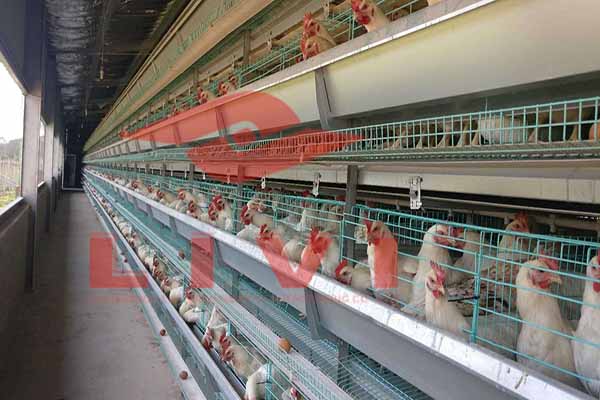Post-maintenance Cost of Automated Equipment for Uganda Chicken Farms
Time : 2025-07-01
Automated equipment has revolutionized the poultry industry, significantly increasing productivity and efficiency. For chicken farms in Uganda, the adoption of automated systems has been a game-changer, offering numerous benefits over traditional manual methods. However, alongside these benefits come certain challenges, particularly concerning post-maintenance costs. This article aims to delve into the nuances of post-maintenance costs associated with automated equipment for Uganda chicken farms, providing valuable insights for both farm owners and poultry industry stakeholders.
Understanding Post-maintenance Costs
Post-maintenance costs refer to the expenses incurred after regular maintenance activities are carried out on automated poultry farming equipment. These costs can be attributed to various factors, such as repairs, consumables, labor, and downtime. By analyzing these costs, poultry farmers in Uganda can make informed decisions regarding the management of their equipment, ultimately enhancing profitability and sustainability.
Types of Automated Equipment in Chicken Farms
Before we can discuss post-maintenance costs, it is essential to understand the types of automated equipment commonly used in chicken farms in Uganda. Some of the key equipment includes:
– Feeders and Drinkers: These devices automatically deliver feed and water to the chickens, reducing the need for human labor.
– Environmental Control Systems: These systems manage the farm’s climate, ensuring optimal temperature and humidity levels for the chickens.
– Monitoring Equipment: Sensors and cameras help farmers monitor the flock’s health and performance, providing valuable data for decision-making.
– Egg Collection Systems: Automated systems collect eggs efficiently, minimizing the risk of broken eggs and reducing labor requirements.
Factors Influencing Post-maintenance Costs
Several factors can influence the post-maintenance costs associated with automated equipment in Uganda chicken farms:
1. Equipment Quality: High-quality equipment tends to require less frequent maintenance and repairs, leading to lower post-maintenance costs.
2. Maintenance Practices: Proper maintenance, including regular inspections, cleaning, and adjustments, can extend the lifespan of equipment, reducing costs.
3. Environmental Conditions: The challenging climatic conditions in Uganda can affect the performance and longevity of equipment, thereby impacting post-maintenance costs.
4. Training: Properly trained personnel can identify and resolve issues early, reducing downtime and costly repairs.
Estimating Post-maintenance Costs
To accurately estimate post-maintenance costs, chicken farm owners in Uganda should consider the following:
1. Equipment Cost: Factor in the initial purchase price of the automated equipment when calculating post-maintenance costs.
2. Maintenance Frequency: Determine the recommended maintenance intervals for each piece of equipment, and allocate funds accordingly.
3. Replacement Parts: Identify the most common parts that require replacement and their associated costs.
4. Labor Costs: Include labor expenses for maintenance, repairs, and any necessary training.
Case Studies: Post-maintenance Cost Savings in Uganda Chicken Farms
Several case studies demonstrate the potential cost savings achievable through effective post-maintenance management of automated equipment in Uganda chicken farms. For example:
1. Reduced Labor Costs: By automating tasks such as feeding and cleaning, farms can significantly reduce labor requirements, leading to lower costs.
2. Enhanced Productivity: Regular maintenance ensures that equipment operates efficiently, leading to improved productivity and ultimately, higher profits.
3. Longer Equipment Lifespan: Proper care and maintenance can extend the lifespan of equipment, reducing the need for frequent replacements and repairs.
Best Practices for Post-maintenance Cost Management
To manage post-maintenance costs effectively, poultry farm owners in Uganda can adopt the following best practices:
1. Regular Maintenance: Implement a scheduled maintenance program for all automated equipment to prevent costly breakdowns and repairs.
2. Use Quality Consumables: Opt for high-quality consumables, such as filters and belts, to ensure optimal performance and longevity.
3. Employee Training: Ensure that all personnel involved in maintenance activities are adequately trained to handle equipment effectively.
4. Record Keeping: Maintain detailed records of maintenance activities, parts replaced, and costs incurred, enabling better budgeting and planning.
Conclusion
The post-maintenance costs associated with automated equipment in Uganda chicken farms are a critical aspect of farm management. By understanding the various factors influencing these costs and implementing effective strategies, poultry farmers can enhance profitability, sustainability, and productivity. As the poultry industry continues to evolve, adopting these practices will be essential for ensuring long-term success in Uganda’s dynamic agricultural landscape.












